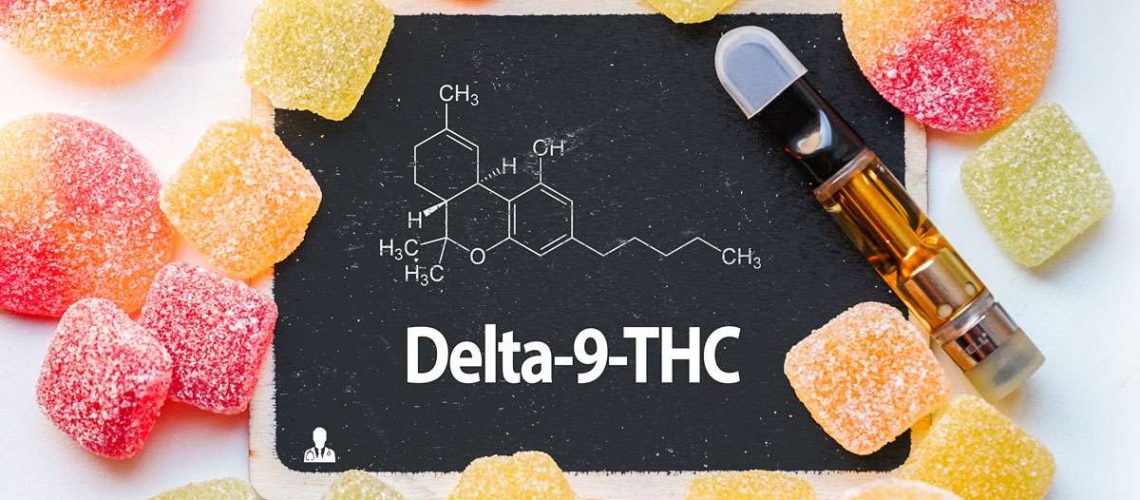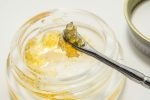The Agricultural Improvement Act of 2018, otherwise known as the 2018 Farm Bill, formally separated the terms “hemp” and “marijuana” by allowing a .3% Delta (Δ) 9 Tetrahydrocannabinol (THC) by-dry-weight composition within the whole flower and manufactured products of the former and labeling everything over .3% Δ9 THC the latter. With this new law allowing cannabinoids to legally hit the market for the first time since the enactment of the 1970 Controlled Substances Act (without FDA approval), hemp’s legacy as a cash crop began gaining new meaning! First, we will discuss the influx of interest in hemp-derived synthetic cannabinoids believed to be “legal” under the 2018 Farm Bill. Then, we will discuss the pharmacology, potential therapeutic outcomes, and safety concerns relating to the first marketed psychoactive cannabinoid to overtake the hemp industry: Δ8 Tetrahydrocannabinol.
To begin, a 2022 International Journal of Drug Policy publication outlines the global surge in Δ8 THC interest, disclosing that the global rate of Δ8 THC searches was stable between 2011 and 2019 before increasing by 257.0% from 2019 to 2020 and 705.0% from 2020 to 2021. With delta-8 searches at least 10 times higher in the US than other countries or territories, American public interest in this contemporarily novel cannabinoid is evident! A 2021 editorial publication by Eric Leas, Ph.D., explains the illegality of synthetic cannabinoids related to the 1986 Amendment of the Controlled Substances Act (CSA). According to this amendment, “the chemical structure of which is substantially similar to the chemical structure of a controlled substance in schedule I or II” and “a controlled substance analogue shall, to the extent intended for human consumption, be treated, for the purposes of any Federal law, as a controlled substance in schedule I.” As the CSA specifically places “tetrahydrocannabinols” under Schedule 1, including “any of their salts, isomers, and salts of isomers whenever the existence of such salts, isomers, and salts of isomers is possible within the specific chemical designation”, where is this “tetrahydrocannabinol” that we see within the hemp market coming from?
A 2024 Molecules review conveys the synthesis, sale, and analysis of Δ8 THC products within the United States. As concentrations of naturally occurring Δ8 THC within the cannabis/hemp plant are extremely low, with some researchers even postulating Δ8 THC is an artifact formed during extraction or analysis, it is not economically feasible to extract Δ8 THC from the cannabis/hemp. Therefore, nearly all Δ8 THC products sold are synthetically created, mainly through the acid-catalyzed cyclization chemical conversion of CBD. Pharmacologically, Δ8 THC acts as a partial agonist to CB1 and CB2 similar to Δ9 THC but with lower affinity, meaning Δ8 THC will not bind as strongly as Δ9 THC to these receptors. Consequently, Δ8 THC shares similar therapeutic applications as Δ9 THC, such as appetite stimulation, nausea reduction, and analgesia, with these activities approximately 75-80% that of Δ9 THC. So, Δ8 THC is illegal per the CSA but is “safer” than Δ9 THC?!
Well, according to a 2022 Molecules article, the concerns with Δ8 THC products are threefold: impure CBD starting material, poor post-reaction purification, and inadequate separation of closely related cannabinoids during laboratory analysis of the final product. As products sold as hemp are not subject to FDA approval, they are not subject to the same stringent regulations that food and pharmaceuticals undergo. Although independent hemp/cannabis labs are available for hemp producers, the high cost of this analysis that the general consumer base is perceived to not have an interest in serves as a barrier for producers to sample their products for more than just potency. Unfortunately at this time, even the most precise testing assays have difficulty accurately separating and quantifying every impurity found within these products. As the industry continues to develop, we will begin seeing more reference standards that will ultimately improve consumer safety and product transparency.
Products purchased should always include a third-party tested Certificate of Analysis (CoA) and be produced within a state-licensed dispensing facility with cGMP regulations. Always speak to your recommending physician before purchasing or consuming any new products.
Resources:
Abdel-Kader, M. S., Radwan, M. M., Metwaly, A. M., Eissa, I. H., Hazekamp, A., & ElSohly, M. A. (2024). Chemistry and pharmacology of delta-8-tetrahydrocannabinol. Molecules, 29(6), 1249. https://doi.org/10.3390/molecules29061249
Leas E. C. (2021). The Hemp Loophole: A Need to Clarify the Legality of Delta-8-THC and Other Hemp-Derived Tetrahydrocannabinol Compounds. American journal of public health, 111(11), 1927–1931. https://doi.org/10.2105/AJPH.2021.306499
Leas, E. C., Nobles, A. L., Shi, Y., & Hendrickson, E. (2022). Public interest in ∆8-Tetrahydrocannabinol (delta-8-THC) increased in US states that restricted ∆9-Tetrahydrocannabinol (delta-9-THC) use. The International journal on drug policy, 101, 103557. https://doi.org/10.1016/j.drugpo.2021.103557
Ray, C. L., Bylo, M. P., Pescaglia, J., Gawenis, J. A., & Greenlief, C. M. (2022). Delta-8 Tetrahydrocannabinol Product Impurities. Molecules (Basel, Switzerland), 27(20), 6924. https://doi.org/10.3390/molecules27206924
Related
-
What is the difference between THC and THCa
Cannabis is known for it's powerful and intoxicating effects but…
-
Improving sleep quality with Medical Cannabis
As a medical professional, I am constantly seeking new ways…
-
Cannabis Dependence and Withdrawal Syndrome
The world has always been curious about cannabis, and how…




